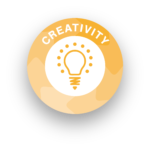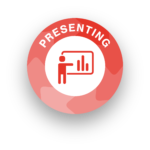When it comes to motivating youngsters to learn, new approaches are always of interest. Here are three ideas that value each student and their individual interests.
Positive Greeting
A 2018 study into the impact of greeting students, revealed advantages that can be reaped in almost any school or home-education setting. It found that welcoming each child using a Positive Greetings at the Door (PGD) strategy was of significant benefit and appeared to foster a sense of belonging and socio-emotional support. This in turn led to students feeling invested in their learning and wanting to build a positive classroom culture together.
Although simple, the PGD strategy produced a 20% improvement in academic engagement and a 9% reduction in disruptive behaviour. –In other words, gaining approximately one whole hour of engagement over the course of a five-hour instructional day.
Following the findings, educators are encouraged to greet students at the classroom door while paying attention to each individual’s name, giving eye contact and using a non-verbal greeting such as a friendly thumbs-up or nod. In certain circumstances a handshake, high-five or verbal enquiry into their day may also be appropriate. A semi-formal system of re-entering a home-education learning environment (such as a lounge, museum or library) could also work very well for a small group or individual learner. Positive ‘precorrective statements’ should also be used to set the tone for the day, alongside words of encouragement or redirection from the previous session.
The study recommends “incorporating proactive strategies to prevent problem behaviours and promote academic engagement as students transition into the classroom learning environment.” Transitions such as those from a noisy lunchtime to a quiet study session or from a cold outdoor playground to a hot indoor classroom are not easy for many children, especially those with High Learning Potential or additional challenges such as Autistic Spectrum Disorder.
The official paper is at http://journals.sagepub.com/doi/abs/10.1177/1098300717753831, with a related article at https://www.edutopia.org/article/welcoming-students-smile
See https://youtu.be/693yg8BgITg or https://youtu.be/6vwDdxbuBnA for examples of teachers using personalised handshakes.
From ‘Push’ to ‘Pull’
Are you ‘pushing’ ideas onto ambivalent learners? Or ‘pulling’ out of them the knowledge they love? If you need to offer incentives to learning, threaten imminent tests or argue the need for certain grades as a gateway to a successful future…then you are probably ‘pushing’.
Project-based Learning is one way of ‘pulling’ knowledge out of children. By knowing a child’s interests, teachers, home-educators and involved adults can formulate a personalised ‘driving question’. This often relates to a real-world situation, but crucially will spark genuine interest, encourage problem-solving and prompt real exploration of a hobby or other area of personal passion. In this way deeper learning is accessed, such as critical thinking, evaluation skills and the general synthesis of key information to be remembered in the future.
For more information visit
https://www.teachthought.com/project-based-learning/push-teaching-vs-pull-teaching-thinking/ or as a good introduction to Project-based learning, try https://en.wikipedia.org/wiki/Project-based_learning
Genius Hour
The ‘driving questions’ inspiring project-based learning can also be used to spark the energy of Genius Hour.
According to www.GeniusHour.com “Genius Hour is a movement that allows students to explore their own passions and encourages creativity in the classroom. It provides students a choice in what they learn during a set period of time”. Acknowledging Daniel Pink’s book, Drive, which back in 2009 highlighted a number of businesses already incorporating ‘genius hour’ into their working week, the website goes on to say that “The search-engine giant, Google, allows its engineers to spend 20% of their time to work on any pet project that they want. Google’s policy has worked so well that it has been said that 50% of Google’s projects [including Gmail and Google News] have been created during this creative time period.”
Genius Hour is by its very essence student-centred, purpose-driven and more informal than other studies, yet is still study in itself. It is intended that it should a) involve research b) produce an end-result that can be shared or published and c) not only shared with the class, but potentially the whole world!
Home educators may find Genius Hour easy to accommodate if they are following a more flexible and less test-driven approach to learning than mainstream education. School-based teachers may appreciate an hour of slightly lower levels of professional engagement during which their class is also challenged, stimulated and preparing for the modern workplace.
See a short video on the Genius Hour at https://youtu.be/NMFQUtHsWhc as well as the helpful websites https://www.teachthought.com/learning/what-is-genius-hour/ and www.GeniusHour.com
If you have used any of these approaches – successfully or unsuccessfully, we would love to hear your feedback on focus@potentialplusuk.org













